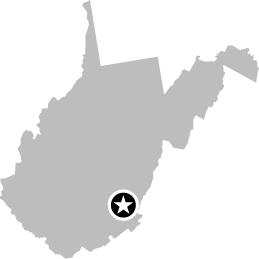126
The Greenbrier, White Sulphur Springs, WV
 37° 47′ 7.44″ N, 80° 18′ 29.88″ W
37° 47′ 7.44″ N, 80° 18′ 29.88″ W
![]()
![]()
The VIP Bunker
About 400 kilometers southwest of Washington, DC, is one of the most luxurious and exclusive resorts in the U.S.—The Greenbrier. Set in over 2,600 hectares of the Allegheny mountains in West Virginia, with everything from golf to fly-fishing to an onsite clinic at hand, The Greenbrier is the kind of resort that welcomes kings, presidents, and other dignitaries. But The Greenbrier has a secret—it was also the location chosen to house the entire U.S. Congress in the event of nuclear war (Figure 126-1).

Figure 126-1. Inside The Greenbrier bunker; courtesy of The Greenbrier
In 1958, The Greenbrier began building a new wing with space for its clinic. This wing apparently needed enormously deep foundations, because the construction company building it excavated far into the earth. In fact, they were making a hole big enough to construct a 10,500-square-meter bunker where 1,100 people could sleep, eat, and work. And beneath The Greenbrier’s own clinic was a fully functioning secret clinic to keep the lawmakers healthy.
The bunker stayed operational until 1992, when its secret was revealed in a newspaper article. For 30 years, a fake company had operated audio-visual services for The Greenbrier while maintaining the bunker in a state ready to receive 1,100 occupants with four hours’ notice. On arrival at the bunker, members of Congress would have stripped naked, showered to remove contamination, and been given fresh, drab clothing to wear.
Once inside, the bunker could be sealed off behind massive blast doors and survive on its own power (from diesel generators), water (from storage tanks), and air. The bunker had rooms for both houses of Congress to meet, a television studio for communication with what was left of the outside world, and a spartan dormitory. Until its closure, staff kept nameplates updated on every bunk bed, so that each member of Congress would know exactly where he or she would be sleeping. Only the leadership of the House and Senate had private rooms. Everyone would eat together in a large canteen capable of seating 400, and would subsist on an enormous supply of freeze-dried food kept stocked inside the bunker.
Part of the bunker was used by the hotel for meetings—little did the VIP guests know that they were sitting in rooms that could be hermetically sealed in seconds and that were designed for meetings of the displaced government of the U.S. In its 30-year existence, the bunker became operational just once—during the Cuban Missile Crisis, the bunker was readied to receive occupants, and historical documents were transported to The Greenbrier for storage in the bunker’s extensive vault.
The bunker is now open for tours, which take in the entire site. Visitors see everything from the power plant, clinic, and kitchen to the dormitories and meeting rooms. There are even stacks of supplies waiting for use. The eeriest part is the incinerator, which stands ready to deal with any member of Congress who didn’t survive their visit.
Given the cost of a room, it’s lucky that you don’t have to stay at The Greenbrier to take the tour. As it stands, it will still set you back a bit—at the time of this writing, it’s $30 a head.
Practical Information
The Greenbrier’s website is at http://www.greenbrier.com/. Information about touring the bunker is at http://www.greenbrier.com/site/bunker.aspx.
